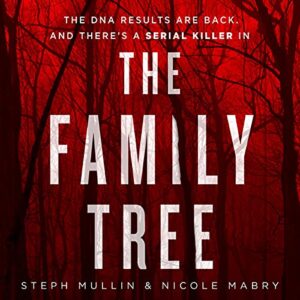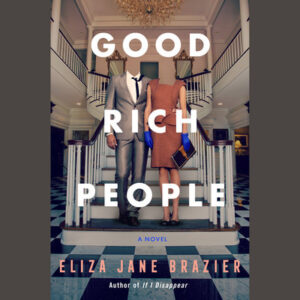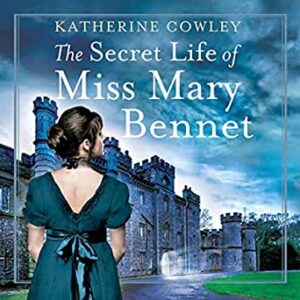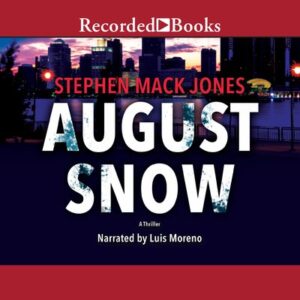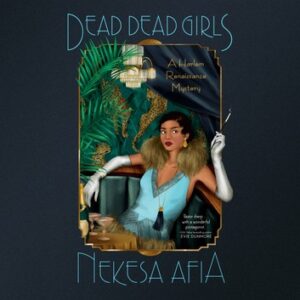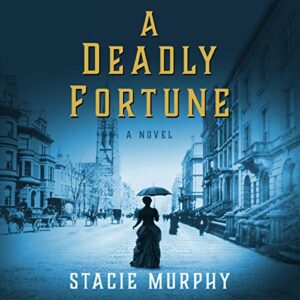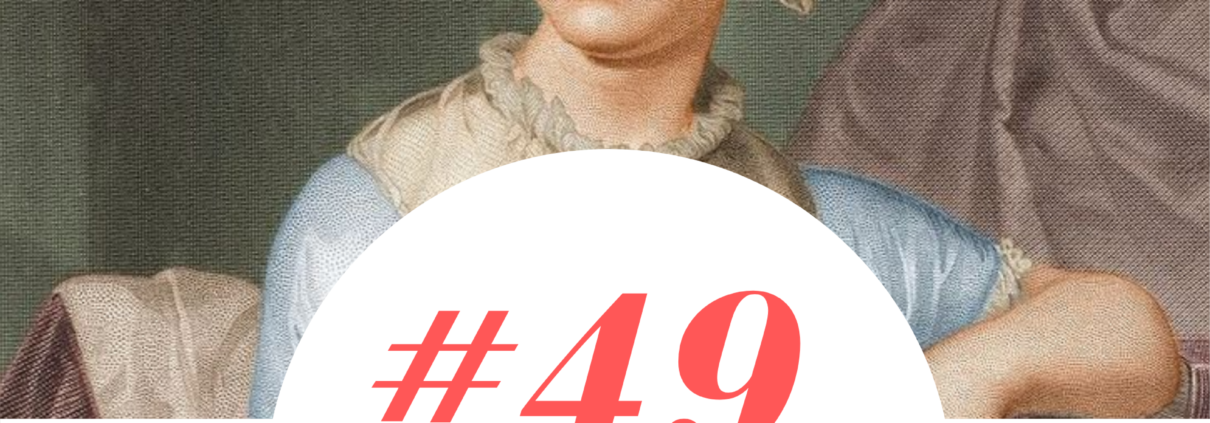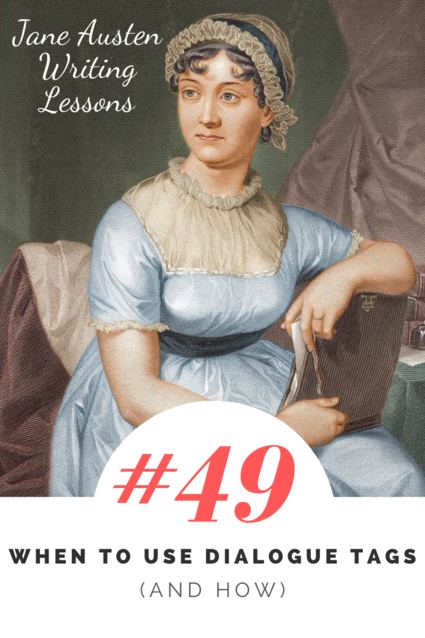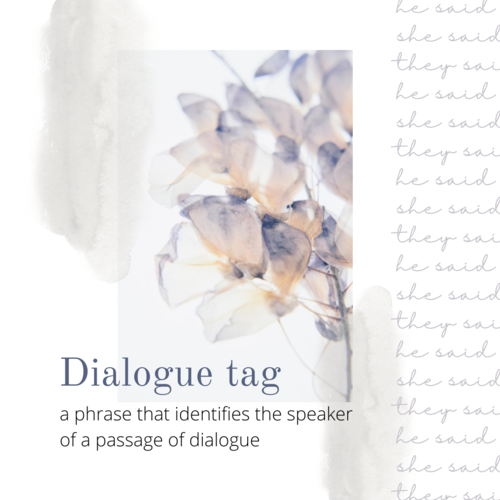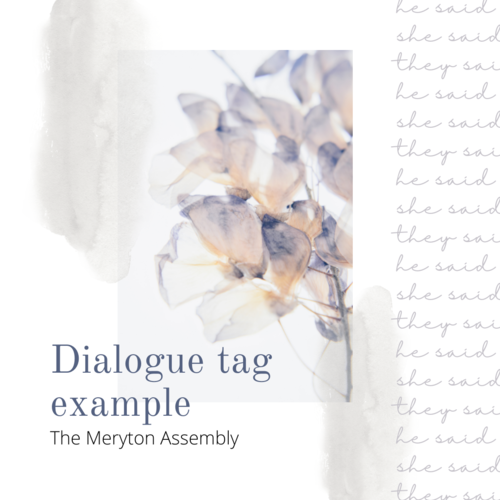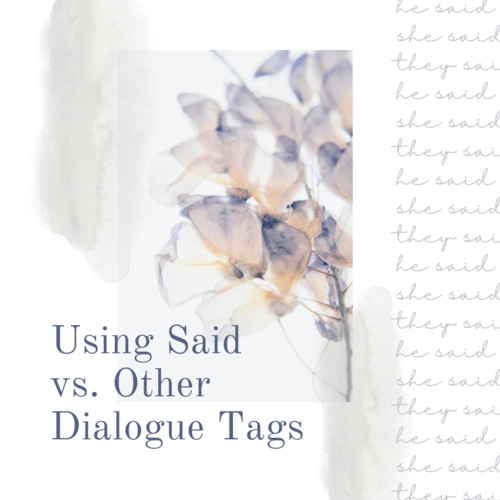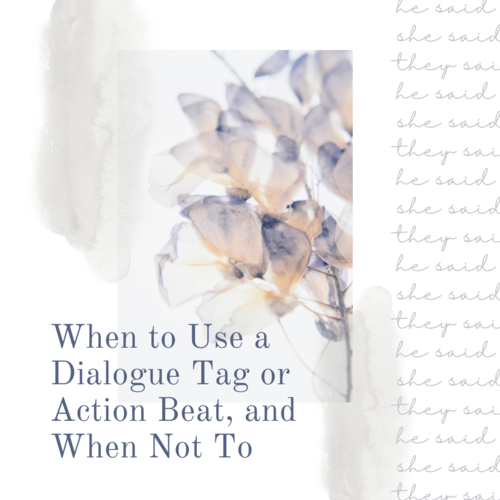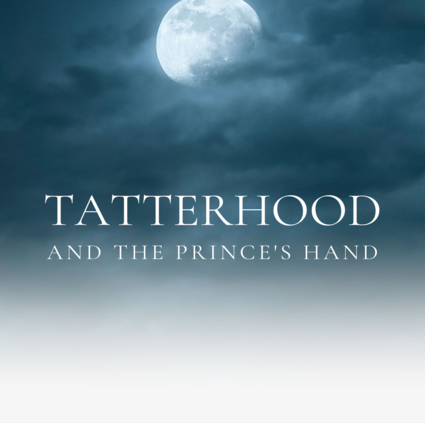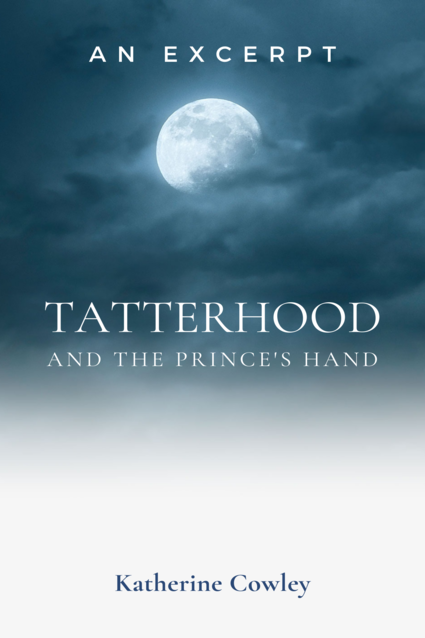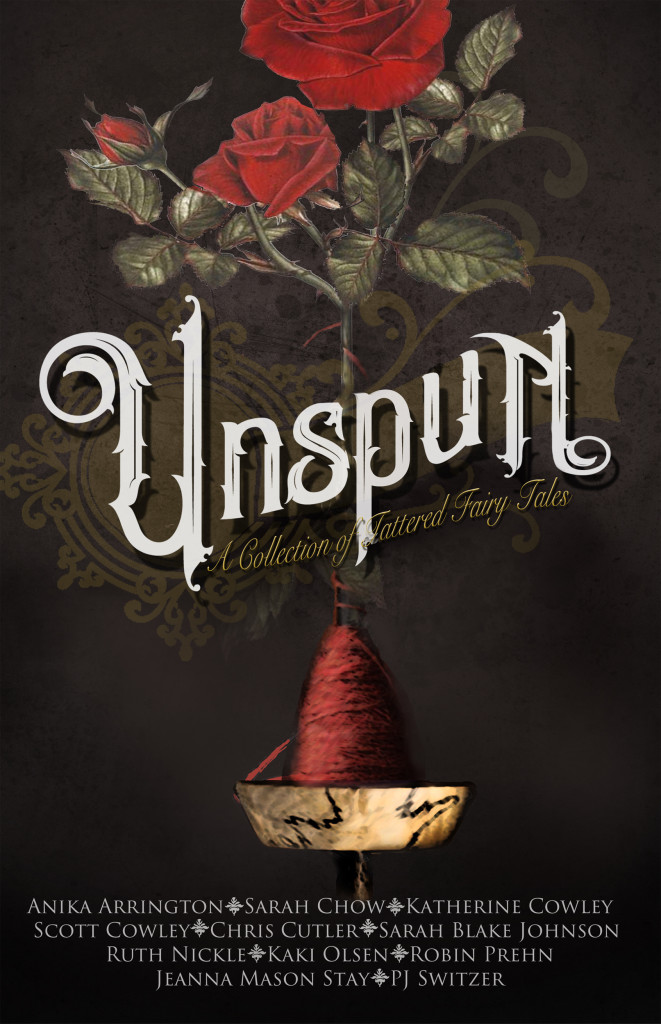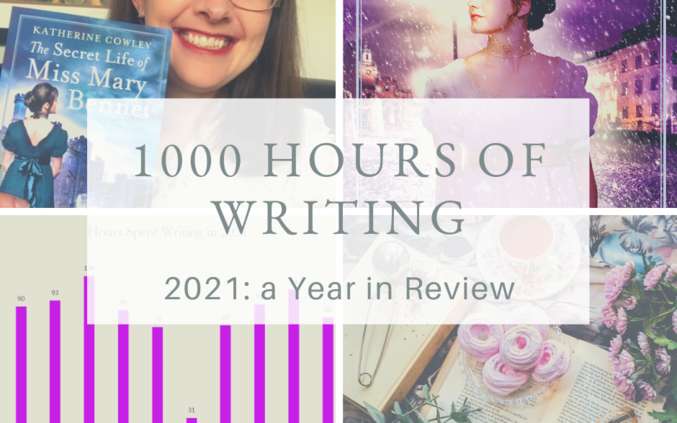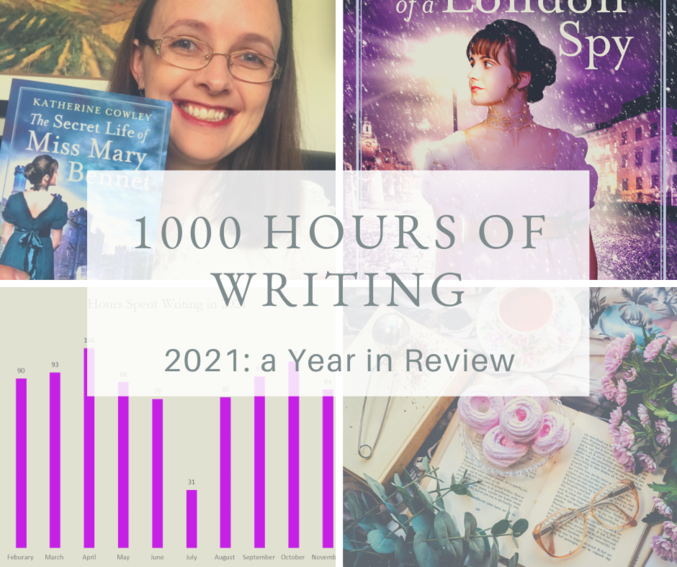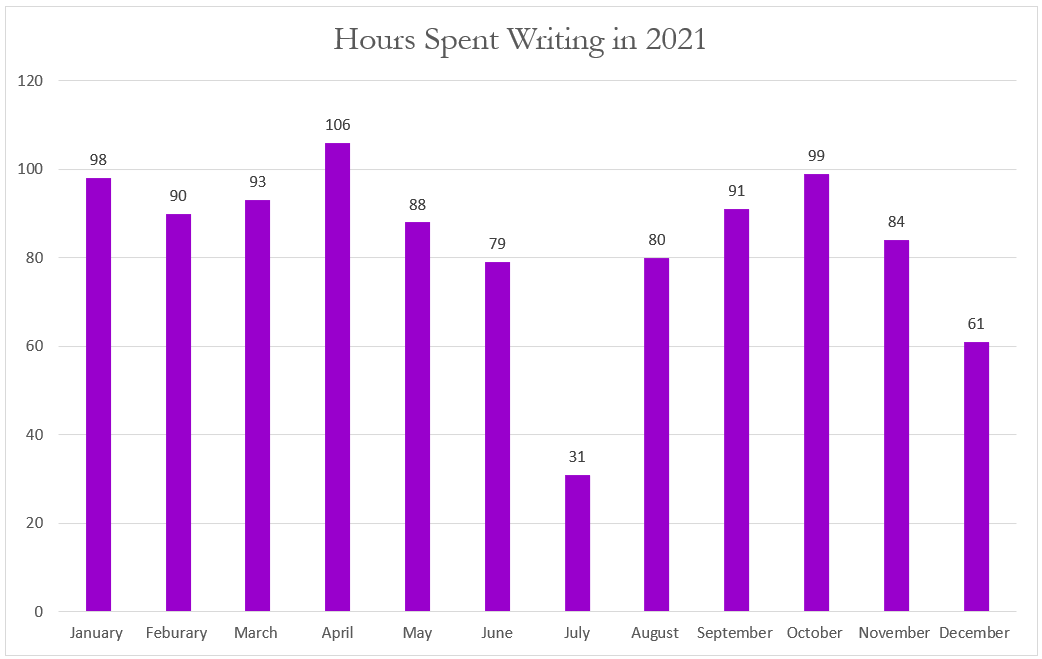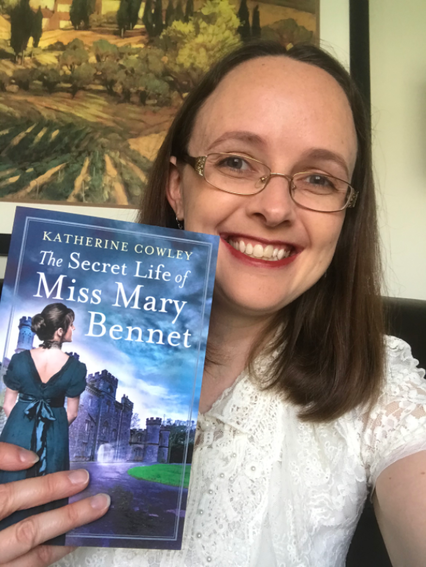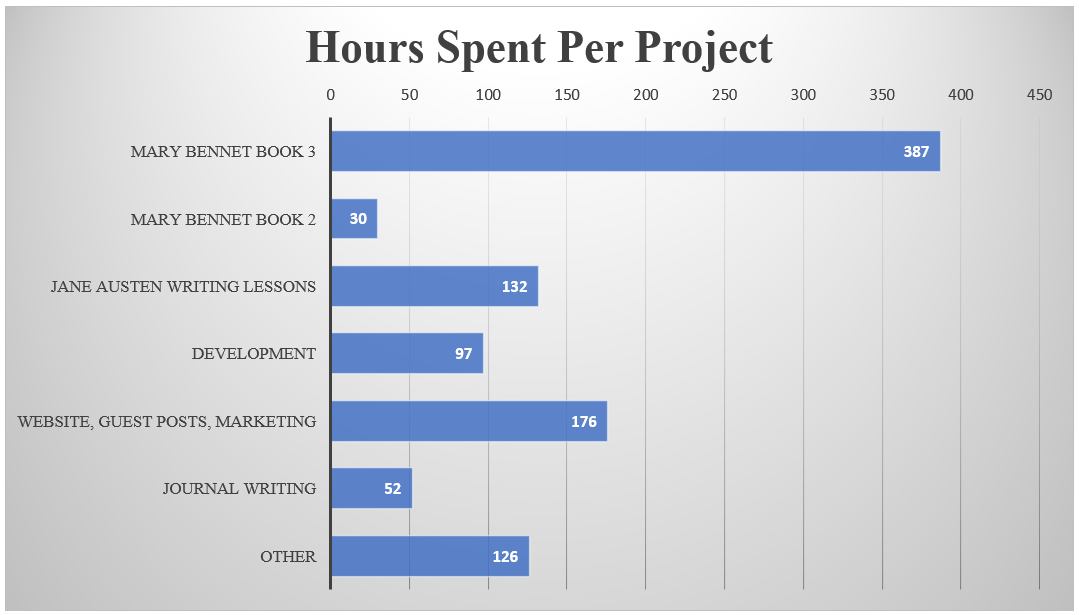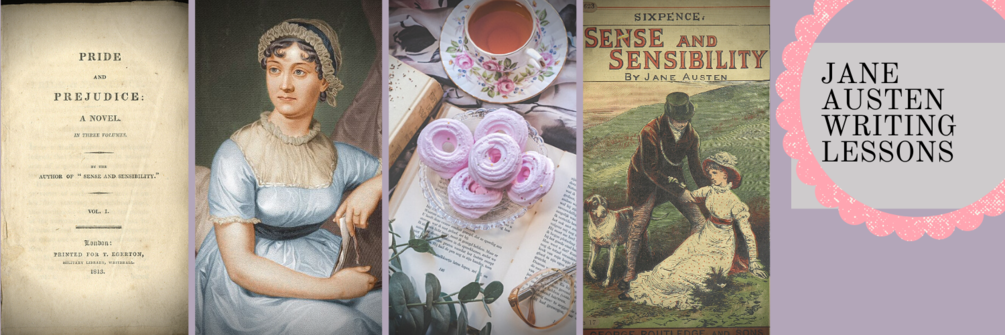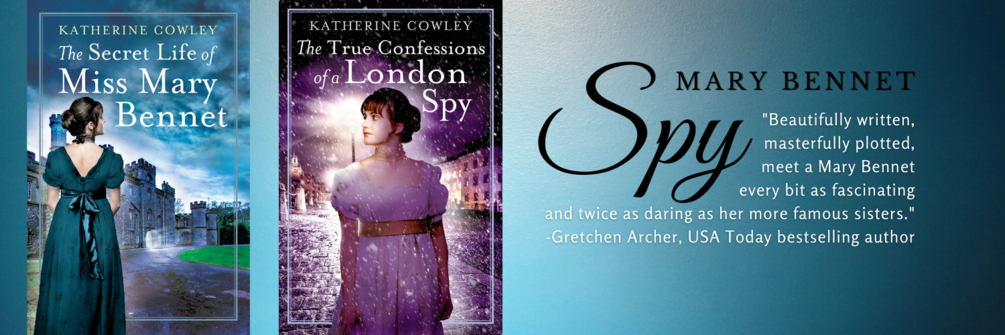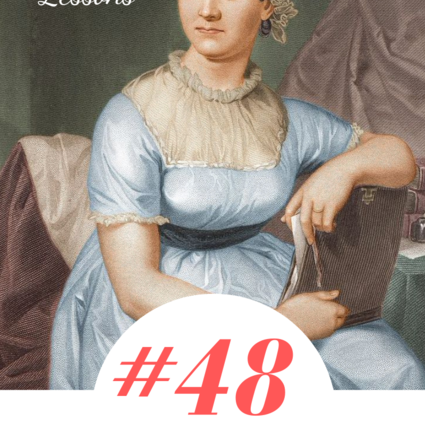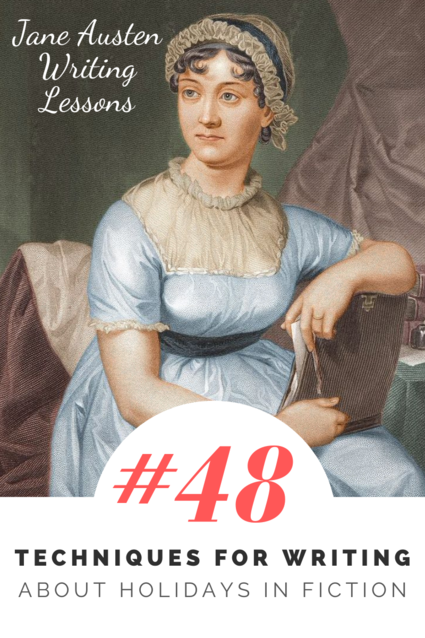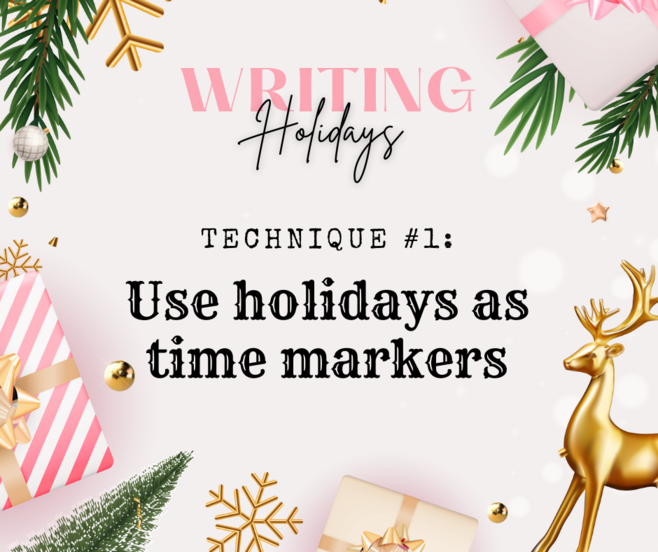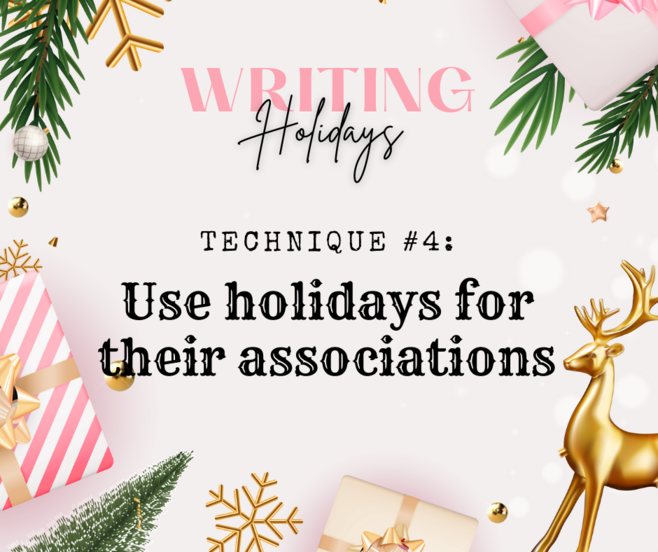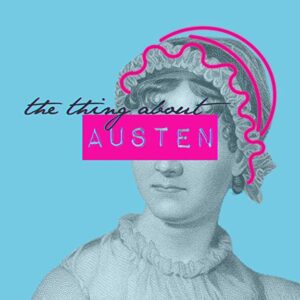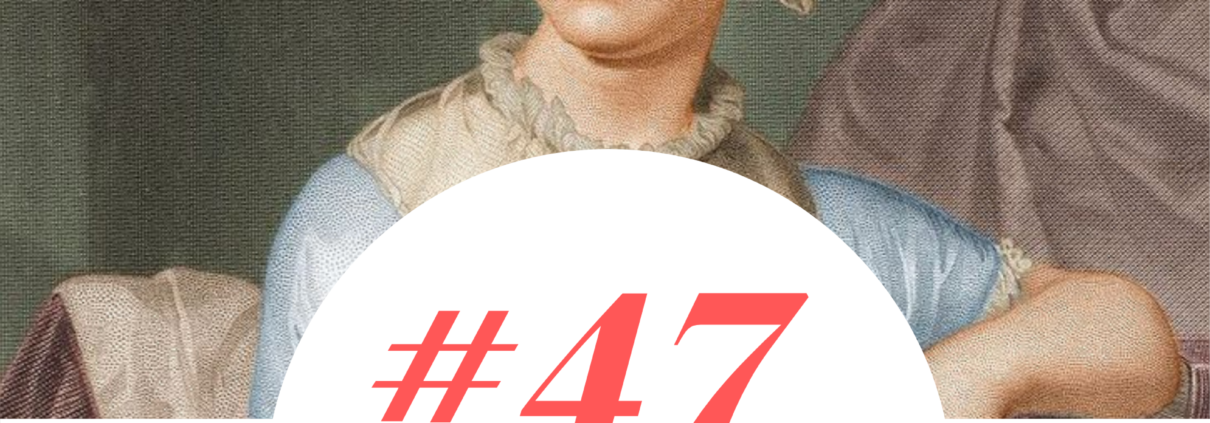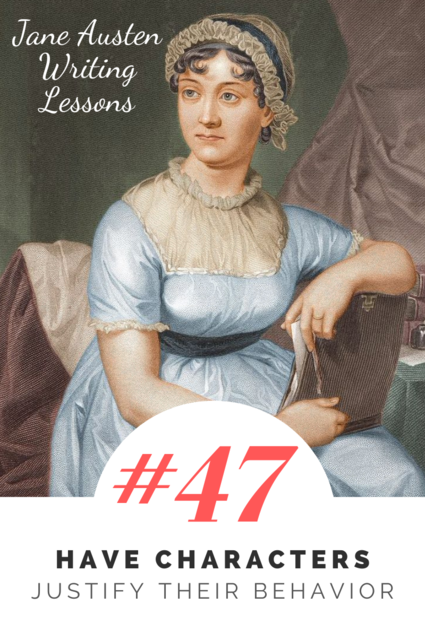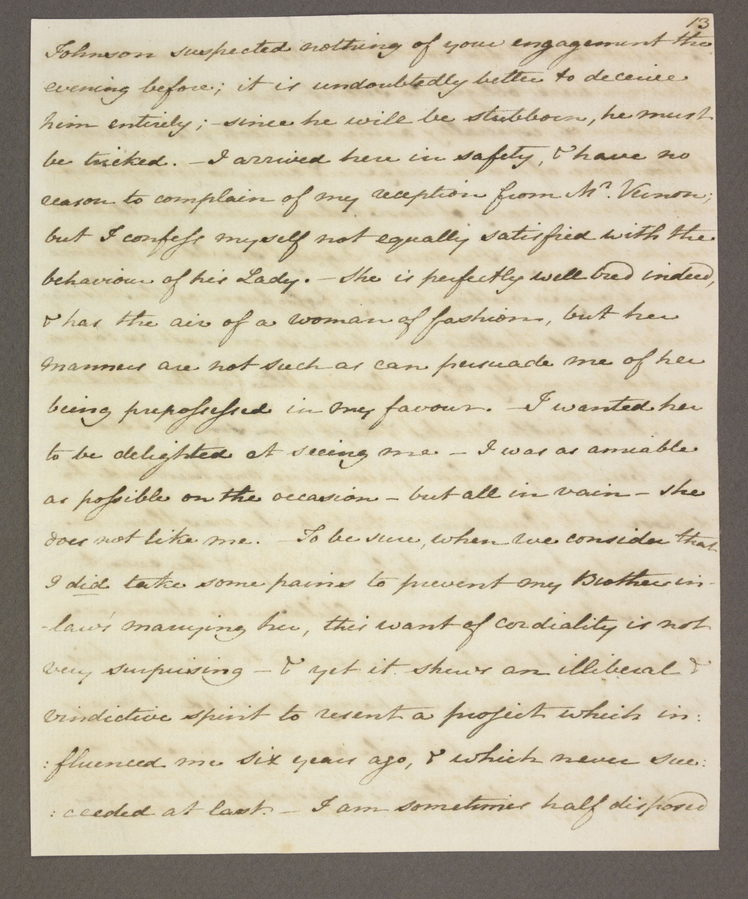10 Full Length Mystery Audiobooks: 2021 & 2022
I’ve compiled 10 incredible full length mystery audiobooks from 2021 and 2022. Each audiobook is unabridged, and most are at least nine hours long, providing an immersive experience with twists and turns and suspense.
Where to listen to mystery audiobooks
- Audible (with a subscription)
- Libro.fm (typically has the best price to purchase individual audiobooks without a subscription. You can also gift audiobooks or get a subscription)
- Hoopla (an app available through many libraries. I wrote another post about mystery books on Hoopla.)
- Libby (an app available through many libraries)
- Buy physical CDs (through Amazon, Barnes & Noble, indie bookstores, or the audiobook publishers themselves)
Full Length Mystery Audiobooks (2021 & 2022)
These recommendations are for 10 audiobooks (full length–mystery) that you can listen to in 2021 and 2022. It includes indie books, hot new mysteries and thrillers, and classic mystery novels.
Arsenic and Adobo by Mia P. Manansala
Cozy mysteries involving food and murder always whet my appetite. This debut novel by Manansala had me craving Filipino food and trying to guess the identity of the murderer until the very last chapter.
The audiobook is also available on the Libby library app (search within app)
The Family Tree by Steph Mullin and Nicole Mabry
This is a fast-paced thriller involving a woman who discovers, via DNA test, that she’s adopted…and according to the FBI, one of her new family members is a wanted killer.
Good Rich People by Eliza Jane Brazier
Good Rich People is an “eat the rich” thriller in which a woman will do anything to survive–including stealing someone’s life and pretending to be rich. This is a fast-paced, intense, masterfully written thriller that was released in January 2022.
The Secret Life of Miss Mary Bennet
Mary Bennet, the overlooked middle sister from Pride and Prejudice, has her secrets…like the fact that she is investigating a murder and spying on her mysterious hosts at Castle Durrington.
(Full disclaimer–I wrote this book, but I have to give a plug for it because it’s narrated by one of the best narrators in the business, Alison Larkin.)
August Snow by Stephen Mack Jones
This is the first book of a compelling mystery series featuring August Snow, a half-Mexican, half-black ex-cop in Detroit who finds himself drawn into cleaning up the city. It’s gritty, has a protagonist whose not afraid of violence, and is a great contribution to the hardboiled detective genre.
The audiobook is also available on the Libby library app (search within app)
Murder on the Orient Express by Agatha Christie
This novel is one of the classics for the mystery genre. Agatha Christie’s mysteries tend to run on the shorter side, but at almost seven hours, this audiobook is full length and unabridged.
The audiobook is also available on the Libby library app (search within app)
Dead Dead Girls by Nekesa Afia
A Harlem Renaissance mystery, with jazz clubs, dancing, and, of course, murder. This book is an incredible debut novel, and the first in a series.
The audiobook is also available on the Libby library app (search within app)
Nanny Dearest by Flora Collins
This is a book where the present collides with the past, and secrets can’t help but be revealed–an adult woman reconnects with her childhood nanny in this suspenseful, multiple timeline thriller.
Waiting for the Night Song by Julie Carrick Dalton
This is a book about childhood trauma, dark secrets unearthed, and has a great underlying environmental themes.
The audiobook is also available on the Libby library app (search within app)
A Deadly Fortune by Stacie Murphy
A compelling, Gilded Age mystery set in New York City with a taste of the supernatural. The main character is placed in an insane asylum because she can summon spirits. Her ability which got her locked up may also be able to save her, and solve a mystery.
Never Saw Me Coming by Vera Kurian
A college-age thriller about a group of psychopaths who are being studied…and then one of them gets killed. Is the main character the hunter, or is she the prey?
The audiobook is also available on the Libby library app (search within app)
Do you have other favorite full length mystery audiobooks that aren’t on this list? If you do, please share in the comments–I’m always on the lookout for my next good listen.
#49: When to Use Dialogue Tags (and How)
Jane Austen is a master of dialogue, and the next series of lessons will focus on what we can learn from Jane Austen on writing dialogue in fiction. This post will specifically address when to use dialogue tags—and how.
While dialogue tags are often taught as an introductory writing technique, Austen uses them in advanced ways, to control rhythm and cadence, and to convey emotion and conflict. Many times, she chooses to forgo dialogue tags entirely. We’ll start with a basic definition of dialogue tags, analyze her sophisticated use of tags in a passage from Pride and Prejudice, and consider the question of when to use dialogue tags, and when to omit them entirely.
A dialogue tag is a phrase that identifies the speaker of a passage of dialogue.
In English, the most commonly used dialogue tag is the word “said” accompanied by the name of a character or a pronoun.
Often dialogue tags are used for clarity and to prevent confusion. Dialogue tags can also be used to add a pause, or to describe how or why a character is speaking.
Instead of using a dialogue tag, an action beat can be used—if a character is acting or doing something, then we assume that the dialogue within the passage also belongs to them.
The Meryton assembly is the first time that we meet the single and ever-so-desirable characters, Mr. Bingley and Mr. Darcy.
Consider the use of dialogue tags and action beats in this passage in which Mr. Bingley attempts to convince Mr. Darcy to dance:
“Come, Darcy,” said he, “I must have you dance. I hate to see you standing about by yourself in this stupid manner. You had much better dance.”
“I certainly shall not. You know how I detest it, unless I am particularly acquainted with my partner. At such an assembly as this, it would be insupportable. Your sisters are engaged, and there is not another woman in the room whom it would not be a punishment to me to stand up with.”
“I would not be so fastidious as you are,” cried Bingley, “for a kingdom! Upon my honour, I never met with so many pleasant girls in my life as I have this evening; and there are several of them you see uncommonly pretty.”
“You are dancing with the only handsome girl in the room,” said Mr. Darcy, looking at the eldest Miss Bennet.
“Oh! she is the most beautiful creature I ever beheld! But there is one of her sisters sitting down just behind you, who is very pretty, and I dare say very agreeable. Do let me ask my partner to introduce you.”
“Which do you mean?” and turning round, he looked for a moment at Elizabeth, till catching her eye, he withdrew his own and coldly said, “She is tolerable; but not handsome enough to tempt me; and I am in no humour at present to give consequence to young ladies who are slighted by other men. You had better return to your partner and enjoy her smiles, for you are wasting your time with me.”
In this passage, there are three dialogue tags which use said: said he, said Mr. Darcy, and coldly said. There is one dialogue tag which uses a different verb: cried Bingley. This shows both Mr. Bingley’s emotion and the manner in which he is speaking. There is one spot where an action beat is used instead of a dialogue tag: “Which do you mean?” and turning round, he looked for a moment at Elizabeth… (This phrasing works well in Pride and Prejudice, but as a note, modern dialogue conventions often—but not always—split the action beat into a separate sentence. If this convention was used, this paragraph could be written something like: “Which do you mean?” He turned round and looked for a moment at Elizabeth.)
Using Said vs. Other Dialogue Tags
The author Elliott Slaughter performed a study of dialogue tags, and one of the texts that he analyzed was Pride and Prejudice. He found that 50% of Austen’s dialogue tags used the word “said.”
In English, “said” is seen as an invisible dialogue tag. It does its job, assigning dialogue to the speaker, but we aren’t meant to really notice or pay attention to it. Often, we don’t want the reader to be focusing on the dialogue tag—we want them to focus on the dialogue itself, and strong dialogue often gives a feel of how the speaker is speaking on its own, without extra description. In the brilliant book Craft in the Real World, Matthew Salesses explains that said being seen as invisible is just a cultural convention, and is not inherently better or right. Non-native English speakers sometimes find the constant use of the word said to be jarring, while those who have read hundreds of books in English become used to it.
Endless authors and books on writing recommend that writers primarily use the word said in dialogue tags, and to use other verbs minimally or not at all. Largely, I agree—a lot of the time, you do want the dialogue tag to be invisible, and if you’re constantly using other verbs, it can distract or become annoying. Yet when we read Pride and Prejudice we can see how effectively Austen uses other dialogue tags.
According to Elliott Slaughter, while 50% of Austen’s dialogue tags use the word said, 32% of the time she uses “functional dialogue tags”—tags which “indicate the function or role of a piece of dialogue.” The functional dialogue tags Austen uses include replied, added, continued, thought, repeated, and answered. Another common functional dialogue tag in fiction is asked. 18% of the time Austen uses “descriptive dialogue tags”—“verbs that describe the manner, mood or inflection of the speech and not simply its function or form.” The descriptive dialogue tags used by Austen include cried, observed, exclaimed, called, and whispered.
In a previous Jane Austen Writing Lesson, I talked in more depth about how characters say lines of dialogue; one method of doing so is to incorporate actions or adverbs. The only thing I’ll add here is an extra detail from Slaughter’s study—at 14 points in Pride and Prejudice, Austen uses an adverb to describe how someone says something. The adverbs she uses include impatiently, warmly, drily, stoutly, and resentfully.
In the passage between Mr. Darcy and Mr. Bingley, there were two paragraphs of dialogue that did not include any dialogue tags or action beats. The paragraph that begins “I certainly shall not” is Mr. Darcy’s dialogue, while the paragraph that begins “Oh! she is the most beautiful creature I ever beheld!” is Mr. Bingley’s.
Omitting a dialogue tag focuses the reader on what the characters are saying, and it increases the pace by which we read the dialogue. In Austen’s novels, dialogue tags are used only if they are necessary for comprehension, if they will positively impact the rhythm or cadence, or if they truly add something to the reader’s understanding of the characters and their conversation. The rest of the time, she does not include dialogue tags.
In Elliott Slaughter’s study on dialogue tags in Pride and Prejudice, he found that for 51% of the dialogue, Austen does not use a dialogue tag or any sort of attribution. This is especially common during conversations between two characters. In some passages, the identity of the speakers will be made clear once, either at the start of the conversation or in the actions before the conversation, and then Austen will give five, six, or ten lines of dialogue without any tags or attributions. While it’s easiest to omit dialogue tags if there are only two characters, Austen often omits tags in conversations with larger groups of characters.
In a later scene in Pride and Prejudice, Mr. Darcy’s makes a declaration on Mr. Bingley’s tractability, and then we read:
“You have only proved by this,” cried Elizabeth, “that Mr. Bingley did not do justice to his own disposition. You have shown him off now much more than he did himself.”
“I am exceedingly gratified,” said Bingley, “by your converting what my friend says into a compliment on the sweetness of my temper. But I am afraid you are giving it a turn which that gentleman did by no means intend; for he would certainly think the better of me, if under such a circumstance I were to give a flat denial, and ride off as fast as I could.”
“Would Mr. Darcy then consider the rashness of your original intention as atoned for by your obstinacy in adhering to it?”
“Upon my word, I cannot exactly explain the matter, Darcy must speak for himself.”
“You expect me to account for opinions which you choose to call mine, but which I have never acknowledged. Allowing the case, however, to stand according to your representation, you must remember, Miss Bennet, that the friend who is supposed to desire his return to the house, and the delay of his plan, has merely desired it, asked it without offering one argument in favour of its propriety.”
“To yield readily—easily—to the persuasion of a friend is no merit with you.”
“To yield without conviction is no compliment to the understanding of either.”
The first two paragraphs include dialogue tags, for Elizabeth and Mr. Bingley, but then the rest of this dialogue we can assume by context that the lines belong to Elizabeth, Mr. Bingley, Mr. Darcy, Elizabeth, and then Mr. Darcy. Descriptions of how these characters are speaking is not necessary—we know them and can make assumptions on their tone and mannerisms based solely on what they say.
There are a few places in Pride and Prejudice where the speaker is unclear, which has led to rather exciting scholarly debates. In a letter about Pride and Prejudice which Jane Austen wrote to her sister Cassandra, she said,
There are a few typical errors; and a “said he,” or a “said she,” would sometimes make the dialogue more immediately clear; but “I do not write for such dull elves” as have not a great deal of ingenuity themselves.
While Austen wished she had added a few more uses of “said he” and “said she,” the fact is that there are 633 lines of dialogue in Pride and Prejudice which do not include dialogue tags, and, with a few possible exceptions, they are not necessary in these passages. As you consider what sorts of dialogue tags you want to use in your own writing, consider also when to use dialogue tags, and when to omit them.
Exercise 1: Dialogue Analysis
Choose a book that you admire written by an author who is not Jane Austen. Take a scene or a chapter and analyze the author’s use of dialogue tags. How often do they use the verb said? Do they also use other verbs as dialogue tags? Are action beats used instead of, or in addition to, dialogue tags. Are adverbs or other descriptions of how the character speak used? How often are dialogue tags omitted?
Exercise 2: Omitting Dialogue Tags
Take a scene of dialogue you have written and see how dialogue tags and action beats you can remove without making it unclear who is speaking.
Exercise 3: Dialogue as Style
How you use dialogue tags is an extension of your style as a writer—the choices you consistently make contribute to the overall style of the text. Write a brief scene of dialogue between two to four characters. Now, revise the scene using two different dialogue tag styles. Here are a few options:
- Style 1: Use only invisible dialogue tags (i.e. said) and omit other dialogue tags.
- Style 2: Lean heavy on action beats, though other dialogue tags are allowed.
- Style 3: Jane Austen style. Omit about half the dialogue tags; when you do use dialogue tags, have about half of them be the verb said and half be other verbs.
- Style 4: Wide range of tags. Use at least one said, one functional dialogue tag (i.e. asked, replied, etc.), one descriptive dialogue tag (i.e. cried, whispered, exclaimed, or said + adverb), and one action beat.
- Style 5: Another approach to dialogue tags of your choosing.
Excerpt: “Tatterhood and the Prince’s Hand”
“Tatterhood and the Prince’s Hand” is a novella I wrote that was published in the 2018 collection, Unspun: A Collection of Tattered Fairy Tales.
Tatterhood is a princess from Norwegian fairy tales who rides around on a goat and fights monsters with a giant wooden spoon. I instantly fell in love with her character, but the ending of the story bothered me: she uses magic to change herself to look beautiful so that the prince she is marrying will be happy. Surely that would not end well, I thought.
My story, “Tatterhood and the Prince’s Hand,” occurs six months later.
Excerpt from “Tatterhood and the Prince’s Hand”
Chapter 2
At first, winning a prince’s hand in marriage had seemed a grand sort of prize to Tatterhood—after all, she had single-handedly defeated an entire band of trolls and saved her sister. Surely she deserved some sort of reward, and Ingridr convinced her a husband would bring her great happiness. But now, six months wed, Tatterhood wondered if she had made a wise decision. Yes, her parents had been thrilled when she returned with a husband who was also a prince, but Prince Trygve was still better at pleasing her parents than her.
Tatterhood rode her nanny goat, Storm, through the fields toward the practice grounds, where she thought she’d find Trygve. She had realized, that morning, that she was expecting a child—she should’ve noticed several weeks ago—and she wanted to tell him.
Trygve was engaged in a swordfight with one of her soldiers. He swung his double-edged sword with great finesse, expertly blocking the soldier’s blows and delivering his own.
Trygve was strong and intelligent—a real warrior. And he was a good man, kind to the people. These were all good traits for a husband who would someday rule by her side. The maids said he was a handsome man, but Tatterhood did not care much about that.
Her people liked him, and Tatterhood liked him for that. But he was always more comfortable with everyone else than with her (except for when she changed her appearance). The previous night they had argued about the new coverlet for their bed. Tatterhood insisted the color didn’t matter while Trygve protested that it did matter and the craftsman had not delivered what he had promised and should redo the work. They had said unkind things to each other, and though they both apologized, they had not spoken much to each other since. So now Tatterhood wanted to tell him about their baby—needed to tell him—but she did not know how exactly to start the conversation.
Trygve won his fight. A smile covered his face as he patted the soldier on the back.
“Who will challenge Trygve next?” asked the sword master.
Maybe if they fought in the training arena, it would make it easier to talk to each other. Tatterhood jumped off her goat and raised her wooden spoon. “I will!”
The people cheered, but Trygve’s smile disappeared.
“What is your weapon?”
Tatterhood raised her wooden spoon. It was a full arm in length—perfect for fighting against a sword. The bowl of the spoon was about the size of her head and worked well as a mace. The handle was not completely smooth; the front side was flat, to make it easier to hold. The end of the handle curved out, like the end of an axe handle, so that during a fight the spoon could not slide out of her grip.
“Tatterhood! Tatterhood! Tatterhood!” the people chanted.
“Let the match begin!” declared the sword master.
Tatterhood sprang into the attack, using both arms to swing her spoon toward her husband’s knee. He blocked and then moved to the offensive, swinging his sword first toward her chest, then toward her abdomen. His strokes came in rapid succession, but his motions had lost some of their normal fluidity.
“What’s wrong?” asked Tatterhood as she used the spoon handle to deflect one of Trygve’s jabs.
“Nothing,” the prince muttered. “You just look very gray today.”
Tatterhood wondered again if he was embarrassed by her appearance. Most people got used to it after a few weeks, yet it still seemed to bother Trygve.
She scowled and spread her hands about a foot apart on the middle of the spoon’s handle. She pushed her right hand forward, propelling the spoon head toward his arm (if it weren’t a training fight, she would’ve gone for his neck). He barely managed to block. She yanked her right arm back at the same time as she pushed her left hand forward, which pulled the spoon head back and sent the back of the handle toward his other arm. Once again, he barely blocked. He tried to attack, but she planted her feet firmly on the ground and pushed the spoon handle against his sword with all her strength. He stumbled backward.
She did not want to cause him any true damage—he was her husband—but she wasn’t going to play easy on him. That was not her way.
She swung toward his knee again. He blocked, and she yanked the spoon back and drove it straight forward, hitting him in the ribs with the spoon head. The hit wasn’t hard enough to break any bones, but he would surely bruise.
“This is not a fair fight,” gasped the prince. “Your spoon is magic.”
“It’s not a magic spoon,” insisted Tatterhood. “Not exactly.” It’s not like she had placed a spell on it—there were a handful of ways she could consciously use magic, but for the most part, it did what it wanted. She could not yoke it to her will. (If she had better, more constant control, she could’ve become a witch, but it was too late for that now.) Yet on occasion, when she used things that resonated with her essence, they channeled a bit of the magic inside her. She couldn’t force it to happen, but at times she might fight better or travel faster or jump higher; once she’d even managed to sing a half decent song while on her goat and holding her spoon, which was clearly magic helping things along.
“It’s made of wood,” said the prince. “If it were a normal spoon it would be damaged by my sword.” His sword had rags wrapped around it to make it less lethal, but even so, he was probably correct.
“Very well,” said Tatterhood. “I will fight you with a sword.”
She raised her hand to pause the fight and thought very hard of the sword in her bedroom. She willed her wooden spoon and her sword to switch places, and suddenly, her sword was in her hand instead of the spoon. Like Trygve’s, it was a stout, two-edged blade, though hers weighed less.
The sword master wrapped rags around the blade.
Tatterhood adjusted her grip on the sword. The metal handle felt cold, lifeless, while her spoon felt as alive as a tree.
Trygve swung his sword, so she parried him.
When it became clear that she would not be an ordinary princess, Tatterhood’s parents had encouraged her to take up sword fighting. In this endeavor, she gained proficiency but not expertise.
Perhaps the problem was the sword itself. It had a decorative hilt, fit for a princess, and a beautiful shine. It had been forged by the best sword maker in the land, and the sword master declared it perfect for either a parade or a fight. But it did not speak to Tatterhood’s essence, and so she much preferred her spoon.
Tatterhood was not as fast as her husband—at least not when she held a sword—and Trygve was very good at this. Though she tried her best, she barely blocked his attacks. She kept shifting her sword’s height, but she could not get in a good attack. Yet even if she weren’t as proficient at the sword, at least there was a light in Trygve’s eyes that she did not see most days, and she liked the way their bodies and their swords moved together. They should fight like this again.
Trygve swung and she moved to block, but it was a feint and now his sword was at her throat. The sword master declared the victor.
Tatterhood bit her lip. She had not wanted the fight to end so quickly, and she did not like to lose. She told herself she would have beaten him if she’d kept her wooden spoon. The soldiers patted the prince on the back.
“Walk with me back to the castle?” Trygve asked.
Tatterhood agreed and asked a servant to take her goat. The servant grimaced but nodded and proceeded to chase the goat. Storm was large, shaggy, and brown. And rather ferocious. She jumped onto a waist-high, wooden fence, bit off the servant’s hat, and ran into a field. This did not worry Tatterhood—Storm always came back.
Trygve took Tatterhood’s hand. He held it, raised, in the formal manner used to escort a noble woman. Their fingers did not intertwine as the villagers’ fingers did when they held each other’s hands, but surely it still counted as holding her hand, and in a public, outdoor setting. He must be pleased with her.
They walked through the field. Tatterhood was about to tell him she was expecting a child when a messenger approached. The lass curtsied and declared, “Letters for Princess Tatterhood and Prince Trygve!” Trygve’s letter was from his father, King Varg, and Tatterhood’s from Ingridr.
They read their letters as they walked. Ingridr was doing well and enjoying the sunny, summer weather. She mentioned that King Varg was troubled. “There are reports of the return of a magical creature, but he won’t tell me any more details.”
Tatterhood looked at Trygve. His face was pale, and his eyes darted back and forth across his own letter.
“Anything wrong?” she asked when he finished reading.
“Of course not,” he snapped.
She did not press him or force an answer. She had already discovered that, in marriage, such tactics should be used only in times of great expediency.
They arrived at the castle, Trygve maintaining his stony silence.
“Bring me my horse,” he instructed a servant.
The servant returned with Sunset, the prince’s prize horse. She was a deep-black beauty with a silver mane. He rode her every day and would touch no other creature. He mounted her and rode to the fields without a word of farewell. Tatterhood entered the castle alone.
Trygve spent several hours with Sunset. When he returned, he was back to his normal self. Whatever troubled him must not be too great if it could be cured by a simple horse ride.
That night she had yet to tell him of their baby. Perhaps she needed to create the right moment. She changed out of her tattered clothes into softer, newer material.
Tatterhood turned to her husband. “Will you lie with me?”
He shrugged, as if to say he did not care either way. Sometimes it seemed he lay with her out of a sense of his duty as a husband, but she did not want that from him tonight. She wanted to please him, wanted to tell him about their baby when she was sure he’d be happy to hear the news.
She considered herself in the mirror, and, as always, found herself satisfied with her own appearance. Tatterhood liked her crooked, lumpy nose; liked the piercing of her eyes and her fierce, bushy eyebrows; liked that her left ear was higher than her right. Above all, she liked her gray skin. It allowed her to blend in with shadows.
She shifted her focus to her husband. There were several ways she could use magic. When she used items that expressed the essence of her soul, magic enhanced her actions. She could switch one object for another if she knew both objects well and knew their location. She could sometimes find a missing object if she had a strong connection to it.
She could also change her appearance for a time, though this was a bit trickier. She sent a wisp of magic toward Trygve, let it prod him, touch his desires. She turned the wisp on herself. She instantly transformed—skin smoother and clearer than her sister’s, dainty eyebrows, proportional features. Her hair was still curly but had a reddish tint to it, which surprised her. Normally it turned pale blond.
Tatterhood sat next to her husband on the bed, feeling less like herself.
“It always amazes me when you do that,” said Trygve.
Now it was Tatterhood’s turn to shrug.
“I wonder what the people would think if you transformed before them,” he said.
“I’ve done it before.” As a child, she’d transformed by accident during a festival. Once she recognized the ability and its implications she did it repeatedly until she mastered the skill. But then the novelty wore off for both her and her people. She thought of them cheering for her in the training grounds. “I’m not sure it’s necessary to do again.” She had told Trygve that she could only change her appearance occasionally because it used too much magic. That wasn’t strictly true—magic wasn’t like a vial of oil that could be used up—but she liked being herself. She already changed herself two or three times a week, and didn’t want him to press her to do it even more often.
“Of course it’s not necessary,” said Trygve. “But when you change, you look as beautiful on the outside as you are on the inside.”
Tatterhood chuckled. “I don’t think I’m like this on the inside.” And then she opened up to him, in a way that surprised her. “On the inside I’m muddy, always ready for a fight. I’m rough edges and frightening cliffs. I’m disheveled, and not always sure what I should do.”
Trygve put his arm around her. His hand wore the ring she had made for him as a late wedding present. “That sounds beautiful to me.”
Beauty didn’t matter to Tatterhood, but she liked his warmth so she leaned into him and kissed his neck. He kissed her on the lips, and soon they engaged in the same activity that led her to be with child. After, they held each other on the bed, and she knew this was the right moment to tell him the news.
But before she could, Trygve combed his fingers through her hair. “I like the red. Why did you add that?”
“I don’t choose what I’ll look like.”
“You don’t?”
“Well, I can choose, if I have something particular in mind. Sometimes I make myself look like a troll. And when I was young, I always made my face look like a frog to frighten Ingridr. Most of the time, though, I make myself appear like what someone else desires to see in me. You always want me beautiful, and so I become beautiful. Today you must like red hair.”
Trygve sat up and wrapped his arms around his knees. “How very strange.”
“It’s not strange at all,” said Tatterhood. “You probably saw someone with red hair and—” The realization hit her like the punch of a two-headed troll to the face. “The new serving girl has red hair. You think she’s beautiful.” At least only Tatterhood’s hair had changed to match Mette’s, and not her entire face.
“I, I—” stuttered Trygve. His face was flushed. “It’s not like that, Tatterhood. Yes, she has nice hair. But I’ve never looked at her in that way—I don’t desire her.”
“Then why is my hair red?” she said, tugging at it.
“Your hair isn’t red anymore.” He pulled on his nightclothes.
She turned to the mirror. Her hair was back to its normal, grayish brown. She’d lost control of the magic, lost the will to make herself what she was not. She curled up in the bed, pulling the blankets around her. She wanted to take her wooden spoon and hit Trygve with it, but she also wanted to hit herself. This was all her fault—all her fault for marrying a prince who did not want her, all her fault for changing her appearance for their wedding.
She had wanted to show him that appearance was transient and unimportant. She had wanted him to talk before their wedding. But she should’ve stayed ugly and gray, and waited for him to like her as she was, if such a thing was even possible.
“I’m sorry, Tatterhood.”
She could not bring herself to turn and look at him, could not accept such a simple apology. She waited, listened as he fell asleep beside her. Then she let three tears—only three—fall down her face and onto her pillow. She was not the crying sort, and so she blamed the tears on her pregnancy.
She had still not managed to tell him about their baby. She wondered if their child would look ugly like her or handsome like Trygve, and if their child would care either way.
Chapter 3
When Tatterhood woke in the morning, she found herself alone.
During their first few months of marriage, every morning they held each other before rising for the day. It seemed the natural thing to do during the almost endless nights of winter, when the sun awoke for only a few hours in the middle of the day. Now, in summer, the sun slept for only a few hours, creating almost endless illumination. The light often caused Trygve to wake hours before Tatterhood, and she would find him reading a book in a chair. She wished she could hold him this morning, because if they had fought the night before, it always softened their feelings toward each other.
“Trygve?” she called.
Silence.
A sense of unease enveloped her, a fear she could not shake. She walked through their rooms, slowly at first, then more rapidly, peeking her head in every nook and corner. The prince was gone.
Her head ached and her jaw felt tight and sore. She must have clenched it as she slept.
She looked on her table, where he always left her notes if he went to do something or meet with someone. There was nothing.
Her heart sank. Trygve never wrote her the sorts of romantic letters featured in ballads, but he always jotted down a few words to let her know if something demanded his attention. She gripped the edge of the table. Maybe he didn’t want her to know where he had gone.
“He’s left me,” she said aloud, and there was no one in her rooms to disagree with her.
Tatterhood dressed hastily in a ragged dress. Rather than brushing her hair, she pulled her hood on top of it. She grabbed her wooden spoon, rushed out of the room, and addressed her attendant, who sat in the hall, doing embroidery and waiting to be called upon.
“Lady Tove, have you seen Trygve today?”
The woman curtsied. “No, Princess. I assumed he was with you.”
The soldier posted in the hall spoke up. “I took the shift before dawn. He must have left before then.”
She wanted to scream that the prince had not just left their rooms, but left her, for good. Yet she should not do such a thing unless she was absolutely certain. She stuck a finger through a small hole in her sleeve, pulling at it until the fabric ripped, creating a much larger hole. She fiddled with the frayed threads. She wished she could ask Ingridr for advice, but her sister was kingdoms away.
As she walked to breakfast, she stopped every single servant in her path to ask if they had seen Trygve. No one had.
One of the servant’s daughters, Anna, came running down the hall. She jumped into Tatterhood’s arms and gave her a sticky kiss on the cheek.
“Where’s Trygve?” the little girl asked.
Surprised to hear her own question turned back on her, it took Tatterhood a moment to mumble, “I don’t know.” Someday, would her own child ask the same question, and would she be forced to give the same response?
“I want him to play with me,” said Anna.
“I can play with you,” said Tatterhood, wanting anything to distract her from her worries.
The girl shook her head and ran back down the hall toward her mother, Elin. “It’s more fun with both of you.”
“You shouldn’t say things like that,” Elin rebuked her daughter. She turned toward Tatterhood. “I’m sorry, Princess. Is there anything I can do for you?”
“Have you seen Trygve?” she asked, already knowing the answer.
“No,” said Elin, and she got a faraway look in her eyes.
Tatterhood wanted to know the woman’s thoughts but did not dare to ask. Elin’s husband had left her last summer. And she wasn’t the only one in the castle to experience such a thing. Years before, the stable master’s wife had left him for another. These sorts of things happened. But they did not—they should not—happen to Tatterhood.
She tightened her grip on her wooden spoon, trying to channel her emotions away from grief, toward anger.
She stomped into the private, family dining room, nodded to her parents, and set her wooden spoon on the table, none too gently.
The queen cleared her throat. “What do I always say about spoons at the breakfast table?”
“There are dozens of spoons on this table.”
“But none made of wood, and none that large.”
Tatterhood pinched her lips together. She moved the spoon onto the floor, beneath her feet.
“Much better,” said her mother.
The serving girls came in carrying fruit. The red-haired girl—Mette—spooned bilberries onto Tatterhood’s plate. Tatterhood tried not to look at her.
“Where’s Trygve?” asked her father.
“I don’t believe he’s coming to breakfast,” Tatterhood said between gritted teeth.
Mette walked out of the room with a bounce.
Tatterhood grabbed a handful of the blue bilberries and shoved them in her mouth, daring her mother to correct her for not using utensils. She knew she was behaving much younger than her age, but she did it anyway.
“You didn’t argue about the coverlet again, did you?”
“No, Mother.”
“I took care of the problem. I ordered another in the color Trygve requested, and, to make you happy, since you hate to see someone not compensated for their work, I purchased the coverlet with the wrong colors. I am sure I will find a place for it.”
Her mother was rather stingy when it came to new furnishings. She had finally replaced the castle curtains a few weeks before, and had made all sorts of complaints about the cost. The fact that she was willing to buy an extra coverlet to make both of them happy meant she must be worried about the state of their marriage.
“Thank you, Mother.” Of course, with Trygve gone, the color didn’t matter.
Mette brought in the cheeses. The sunlight shining through the windows glinted off her long, red braid. Tatterhood gripped her silver fork and knife, picturing Trygve talking to Mette, putting his hand on her shoulder, perhaps escorting her to her room. . . .
Mette smiled at her as she returned to the kitchen.
Tatterhood tried a bite of cheese but did not like the taste. She raised one of the breakfast linens to her mouth and spit the cheese into it. Why had she tried to pretend nothing was wrong? She could continue this charade no longer. She dropped the soiled fabric on her plate.
“Please excuse me.” She dashed after Mette and slammed open the door to the kitchen.
The servants all stared as Tatterhood bounded into the room. Mette turned quickly, almost dropping her tray.
“Where is my husband?” Tatterhood hadn’t entirely meant to yell, but it came out that way.
“Wh-what?” Mette stammered, simultaneously setting down the tray and trying to curtsy.
Tatterhood put her hands on Mette’s shoulders. It took great control not to shake the girl, though she desperately wanted to. “Where is Trygve? Where is the prince?”
“I don’t know,” she whimpered. “Why should I know?”
“Just tell me where he is. What did he say to you?”
Mette was almost in tears. “I’ve only been here three days. I’ve never even talked to the prince.”
“Did he visit you this morning?”
The girl did not respond. She looked like a rabbit, frozen in fear.
“Did he?” Tatterhood yelled.
One of the other serving girls curtsied before her. “With all due respect, Princess, Mette shares a room with me. The prince could not have visited her. I’ve been with her almost every moment since she’s been here.”
“The prince never spoke to her,” the other servants confirmed.
Tatterhood’s eyes jumped from servant to servant, reading the sincerity in their faces.
She released Mette as if she were a burning hot pan. The girl sniffled and seemed to shrink away.
The other servants stared at Tatterhood. She breathed in and out, trying to control her rage. She trusted these people, these people who had worked for her family for years, and if they said the girl was innocent of wrongdoing, she had to believe them.
But oh how she wished the girl had wronged her, for then she would no longer need to blame herself for Trygve’s departure.
She knew she needed to apologize to Mette, knew she should, but could not bring herself to do it. Not to this woman that Trygve desired, not to this woman that he had partially turned her into.
A throat cleared. Tatterhood turned reluctantly toward it.
Her father stood in the doorway. He held her wooden spoon.
She walked toward him, head bowed.
He put his arm around her, and did not even berate her for her treatment of Mette, though she surely deserved it.
“What has happened?”
Tatterhood could not speak.
Her mother came and put her hands on both of their shoulders, then led them back into the dining room. As the door closed, the words of a servant drifted through: “Tatterhood’s not normally like this.”
Her father gave her the wooden spoon and she clutched it to her chest.
“What happened between you and Trygve?” he asked.
“Trygve does not like being my husband.” She swallowed. “And I think he has run away.”
She let them hold her for a minute, and then they sprang into action, assembling the servants and courtiers and sending them to scour the castle, the city, and the surrounding areas. Tatterhood joined in the search herself. But during the entire morning, no one found a trace of him.
Tatterhood went to the stables. The stable master put his hand on her shoulder. He had kind eyes, eyes that understood, that had been through this before. But she could not bear his kindness, not right now.
“I need a little time alone.”
The stable master sent all the stablehands away.
She beat at the hay with her wooden spoon. Little pieces broke off and flew into the air. Several guards had seen the prince wandering the gardens in nightclothes during the early morning, but no one had seen him leave the castle grounds.
Tatterhood beat a new bale of hay. Her father had offered to send out the guard, all the way to King Varg’s kingdom if necessary, to bring Trygve back. She had turned him down. She would force no man to be her husband. She did not want a man, anyway, who cared only about her appearance.
She set down her spoon and leaned with her back against the hay. Her belly was a little queasy. For some reason she had assumed she wouldn’t have the same physical troubles as other women. She put her hand on her stomach, which had not yet begun to grow. There were no outward signs of the baby. Would Trygve have left if she had told him?
At least she had what she needed from him: an heir. She did not doubt her ability to rule the kingdom without a king by her side.
She stood, not bothering to brush the hay from her tattered dress. She walked through the stable, and a horse whinnied at her. She stopped.
It was Sunset.
She ran her fingers through the mare’s immaculate, silver mane. Sunset pushed her muzzle against Tatterhood’s chest, so Tatterhood found a brush and groomed the horse. The steady, rhythmic action calmed her in a way that beating the hay had not.
How strange for the prince to leave Sunset behind—it would be like her abandoning Storm. She would never do such a thing unless under great duress.
Tatterhood set down the brush. Sunset snorted at her.
“Sorry to cut it short,” Tatterhood said and stepped outside the stable.
“Sunset is still here,” she said to the stable master. “Did Trygve take one of the other horses?”
He scratched his chin. “I don’t know, Princess. There’s been a lot of horses out and about, what with looking for him.”
She waited while he called back the stablehands. They went over all their charges—every single horse—but not a one was unaccounted for. All the horses absent from the stable had been used by someone trying to find Trygve.
So Trygve had left on foot. Maybe he had bought a horse in one of the villages on the road, but why if he could take his own steed?
“I am sorry,” said the stable master. “I should have checked earlier.”
“It’s not your fault.” Her belief that Trygve had left her had probably made the people searching for him less likely to notice any details that contradicted that conclusion.
She returned to their rooms, examining them in more detail.
Trygve had left his sword.
The laundry master brought in a dozen laundry girls and boys. They determined that the only clothes missing were his nightclothes.
Tatterhood could understand him leaving, but to leave in his nightclothes, without sword or horse? Maybe she had judged him too quickly.
Read the full story
If you enjoyed this excerpt from “Tatterhood and the Prince’s Hand,” you can read the full novella in Unspun: A Collection of Tattered Fairy Tales.
Purchase on Amazon (or read on Kindle Unlimited)
1000 Hours of Writing in 2021: A Year in Review
In 2021, I spent 1000 hours writing.
1000.
A few weeks ago I realized how close I was to 1000 hours of writing for the year, so I decided to go for it and get in the last few hours.
1,000 hours 1,000 hours
If you look back on previous years, there were a number of years when I was firmly in the 400 to 600 hours a year range (so writing on average 60 to 100 minutes a day). Last year was my most writing time ever, with 909 hours total–so an average of 150 minutes or 2.5 hours a day. 1000 hours per day is an average of 165 minutes a day, or 2.75 hours.
Of course, I was not actually writing 2.75 hours a day–some months I wrote a lot more than that, some months a lot less:
Now, a qualifier. I did not spend 1000 hours typing. I’ve talked about this in previous year-in-review posts, but I believe in being pretty expansive in my definition of writing. Daydreaming about story ideas counts as writing. Listening to writing podcasts counts as writing. Submitting stories for publication counts as writing. That said…
What specifically did I work on in 2021?
First off, my debut novel was published!
When I was five years old, I decided that I wanted to be an author and publish books. While I have had a number of shorter works published, this year was my first to publish a book.
Having my book out in the world has been thrilling and tiring and exciting and overwhelming and wonderful all at once. Most of all, I’m grateful to have a story that I wanted to tell out in the world. And I’m grateful to everyone who has read and shared and reviewed my book–I truly appreciate all of your support for my stories!
While The Secret Life of Miss Mary Bennet was a huge milestone for my year, it actually didn’t take up most of my writing time. (The time that it did use was sharing the word about the book on social media, blog posts, sending out my newsletter, being a guest on podcasts, updating my website, etc.–aka marketing.)
Here’s a snapshot that shows how I spent my writing time throughout the year:
Book 2 in my Mary Bennet series—The True Confessions of a London Spy–comes out in a little over two months, on March 1, 2022. However, this past year I only spent 30 hours on it, and that was for final revisions. (Most of the time for that book came in 2020, when I spent 347 hours on it, and from 2018, when I wrote a very rough first draft.)
What I did spend most of my time on in 2021 was Book 3 in the Mary Bennet series, The Lady’s Guide to Death and Deception. I spent 387 hours on the book. This included brainstorming, research, outlining, reading newspapers from the time, and four drafts. The book is still not finished–I still have 3-4 revision passes on it with the publisher that will happen in early 2022.
Other things I worked on:
Jane Austen Writing Lessons. This has been a project of joy, as I’ve deep dived into writing through the lens of Jane Austen. Basically, this is everything I know about writing in a series of blog posts, and it was actually selected by the Write Life as one of the 100 Best Websites for Writers in 2021.
The 97 hours spent on development included my monthly writing group, critiquing the writing of others, accounting, networking, goal setting and tracking, and learning about writing through listening to writing podcasts and reading books about writing. Developing yourself as a writer is so essential at every stage of the writing or publishing process you are at, and so it’s something that I continue to prioritize.
It’s also important to do writing that’s just for yourself, and that’s where my 52 hours of journal writing came in. And then there were all sorts of other smaller writing projects and writing-related tasks that I worked on throughout the year.
How much of the thousand hours was spent actually outlining, writing new words, or revising? I have no idea, and I absolutely refuse to go through every entry in my time tracker to figure that out. My guess is at least 500. But that number doesn’t really matter to me, because all of the writing-related things are important for me as a writer.
How in the world did I get in 1000 hours?
In years when I was writing 400 hours per year, it was because I fought tooth and nail to spend a solid hour a day working on my writing. It took sacrifices–reading less, watching less, cleaning less, waking up early or staying up late, and sometimes insane life-juggling to carve out that hour.
Writing 1000 hours this year was actually easier than writing 400 those years, because of a very particular set of life circumstances:
- In September, my youngest child entered full-day kindergarten, but I did not start working full-time. Instead I got a 10-hour-a-week part-time job.
- From January to June, I was a stay-at-home parent with one 5-year-old at home. She was rather independent. I also gave her movie time for 2 hours every afternoon, and I always used it for writing time.
- Our family finances work on only my husband’s salary, which is a privilege that many incredible writers don’t have. I can put 1000 hours into writing even if I’m not going to make much from it.
If life has taught me anything, it’s that I can’t guarantee what my life circumstances will look like in any given year. Maybe I will have years in the future where I can spend 1000 hours writing, maybe I won’t. But it was fun to achieve that completely arbitrary benchmark this year.
What to Look for From Me in 2022
- March 1: The True Confessions of a London Spy (Mary Bennet 2) will be released
- May 13-14: I will be teaching a class called “In Defense of Writing Slowly” at the Storymakers conference in Utah
- September: The Lady’s Guide to Death and Deception (Mary Bennet 3) will be released
Hopefully I will be able to add some more in-person events to this list
My Goals for 2022
- Finish revisions on The Lady’s Guide to Death and Deception
- Actually finish revisions on an old steampunk novel (this is a goal I had for 2021 that I didn’t meet)
- Write at least the first draft of a new book (I have a few ideas for this)
I may add or subtract goals from this list as the year progresses.
#48: Techniques for Writing About Holidays in Fiction
Jane Austen has a thing for Christmas.
In some of her novels, Christmas is mentioned only in brief, while in others it is a focal component, but each of her six published novels incorporates Christmas in some way. In this post, we’re going to look at how Jane Austen uses Christmas as a storyteller, and what writing techniques we can learn from her. Whether your characters celebrate Christmas or Eid or Rosh Hashanah, you can apply these techniques for writing about holidays in fiction to your own stories.
Technique 1: Use Holidays as Time Markers
Major holidays act as time markers in the year—they are days that are out of the ordinary, and we associate them with certain months and seasons. Austen often references Christmas a time marker, to show either a sense of when something occurred or will occur, or to show the passage of time.
She does this a number of times in her novels, but here’s a few brief examples.
Mansfield Park
In Mansfield Park, there is a conversation between Miss Crawford and Edmund Bertram. They share a romantic interest in each other, but Miss Crawford looks down on the clergy as a profession, while Edmund looks forward to becoming a clergyman:
“Ordained!” said Miss Crawford; “what, are you to be a clergyman?”
“Yes; I shall take orders soon after my father’s return—probably at Christmas.”
Pride and Prejudice
After the regiment leaves Meryton, initially a number of members of the Bennet family are devastated. Eventually, their intense feelings on the matter begin to subside:
Mrs. Bennet was restored to her usual querulous serenity; and, by the middle of June, Kitty was so much recovered as to be able to enter Meryton without tears; an event of such happy promise as to make Elizabeth hope that by the following Christmas she might be so tolerably reasonable as not to mention an officer above once a day…
Technique 2: Use Holidays to Convey Emotions
Holidays are not joyful for everyone: there is not a unified experience or emotional reaction for any holiday. Jane Austen uses holidays to demonstrate a range of emotional states. Sometimes, the emotions shown will be about the holiday itself, or people’s expectations and experience of the holiday. At other times, she will use a holiday to reflect a character’s overall emotional state at this point in the story.
This passage in Persuasion does both: we see characters’ emotions about the present holiday (which in part is related to their expectations for it). Lady Russell expects a quieter holiday than Mrs. Musgrove. We also see characters’ emotional states about the present events—Anne is still troubled by Louisa Musgrove’s accident and the resulting health consequences, and so she expects something different from Christmas, while Mrs. Musgrove finds the Christmas chaos to be a balm for her worries about her daughter Louisa.
Immediately surrounding Mrs Musgrove were the little Harvilles, whom she was sedulously guarding from the tyranny of the two children from the Cottage, expressly arrived to amuse them. On one side was a table occupied by some chattering girls, cutting up silk and gold paper; and on the other were tressels and trays, bending under the weight of brawn and cold pies, where riotous boys were holding high revel; the whole completed by a roaring Christmas fire, which seemed determined to be heard, in spite of all the noise of the others. Charles and Mary also came in, of course, during their visit, and Mr Musgrove made a point of paying his respects to Lady Russell, and sat down close to her for ten minutes, talking with a very raised voice, but from the clamour of the children on his knees, generally in vain. It was a fine family-piece.
Anne, judging from her own temperament, would have deemed such a domestic hurricane a bad restorative of the nerves, which Louisa’s illness must have so greatly shaken. But Mrs Musgrove, who got Anne near her on purpose to thank her most cordially, again and again, for all her attentions to them, concluded a short recapitulation of what she had suffered herself by observing, with a happy glance round the room, that after all she had gone through, nothing was so likely to do her good as a little quiet cheerfulness at home.
Louisa was now recovering apace. Her mother could even think of her being able to join their party at home, before her brothers and sisters went to school again. The Harvilles had promised to come with her and stay at Uppercross, whenever she returned. Captain Wentworth was gone, for the present, to see his brother in Shropshire.
“I hope I shall remember, in future,” said Lady Russell, as soon as they were reseated in the carriage, “not to call at Uppercross in the Christmas holidays.”
Technique 3: Use Distinctive Holiday Details
At times, Austen gives distinctive details surrounding Christmas. This gives flavor to the holiday and paints the setting for the reader. As a modern reader, these details are fascinating, but they would also be interesting for a contemporary reader because they show how a particular character or group interacts with the holiday.
In the above passage from Persuasion, here are some of the distinctive details included about Christmas:
- Girls cutting up silk and gold paper
- A table covered by “tressels and trays, bending under the weight of brawn and cold pies”
- A “roaring Christmas fire”—a loud, large fire, louder and larger because it is for Christmas
The novel Sense and Sensibility includes only two brief references to Christmas, and yet the details included do give flavor to both the holiday and the character’s experience.
After Marianne Dashwood falls down a hill and is rescued by John Willoughby, the incident is mentioned by the Dashwoods to their friend Sir John, and Sir John gives several details praising Willoughby’s character, including the following with a reference to Christmas:
“He is as good a sort of fellow, I believe, as ever lived,” repeated Sir John. “I remember last Christmas at a little hop at the park, he danced from eight o’clock till four, without once sitting down.”
Here, we have details about Christmas—an outdoor party at the park, with dancing for eight hours!
Technique 4: Use Holidays for their Associations
Every holiday has a set of associations for both characters and readers. Some of these associations are universal—Christmas, for example, is associated with celebration and community and gathering as family and friends—while some may be more distinct.
In Emma, when the characters are at Box Hill, the characters begin sharing conundrums—a sort of riddle—and other plays on words. When it comes to Mrs. Elton, she says:
“Oh! for myself, I protest I must be excused,” said Mrs. Elton; “I really cannot attempt—I am not at all fond of the sort of thing. I had an acrostic once sent to me upon my own name, which I was not at all pleased with. I knew who it came from. An abominable puppy!—You know who I mean (nodding to her husband). These kind of things are very well at Christmas, when one is sitting round the fire; but quite out of place, in my opinion, when one is exploring about the country in summer.”
Mrs. Elton’s excuse for not participating is that it is not Christmas.
At other times these associations create emotional touchstones for the reader.
One of my favorite podcasts, The Thing About Austen, recently aired an episode about Elizabeth’s invitation for the Gardiners to join her for Christmas at Pemberley—first, Christmas is set up as a family event in the novel, for which the Gardiners always come to visit; then, Elizabeth supposes that it is good that she did not marry Mr. Darcy, for he would not allow the Gardiners to visit; and then, Elizabeth invites the Gardiners for Christmas. It’s an 18-minute episode, and well worth listening to for the way they analyze these passages and the details they include about Christmas in the Regency.
Technique 5: Use Holidays for Key Scenes
In a previous post, I discussed how distinctive settings are often used for key scenes and turning points.
A holiday can provide a perfect opportunity for these key scenes or turning points—there is lots of emotions, and characters are often gathered together.
The most famous holiday scene in Austen’s works is the Christmas Eve dinner at the Westons in Emma. Its untimely end due to the snow leads to Mr. Elton’s unwanted proposal to Emma in a carriage. I discuss this scene in more depth in my post on using distinctive settings for major plot turns.
The other key scene which occurs at Christmas is the ball thrown for Fanny and her brother in Mansfield Park. This is the first time Fanny’s uncle has truly given her any attention—it is, perhaps, the first time she has felt valued by him. It provokes an internal crisis, as Fanny must decide whether to wear the necklace given her by the Crawfords or the one given by her cousin Edmund. And it is also an event where Henry Crawford gives Fanny his attentions as he attempts to make her fall in love with him. It’s an important scene with many key plot and character moments that change the course of the story.
Conclusion
While Austen often references Christmas, these techniques can be used for incorporating other holidays in fiction as well. Holidays are not an essential or required part of storytelling, yet every single culture and people celebrates holidays. Including holidays can give a fullness to the characters’ lives and show how they behave in circumstances which are out of the ordinary.
Exercise 1: Other Holidays
Choose a holiday that is not Christmas that your characters would celebrate. Write either a reference to the holiday or a full scene which uses at least one of the techniques in this lesson. Make sure to consider what associations the characters would have for the holiday and how they would celebrate it.
Exercise 2: A Holiday Story
Some of the most famous works of fiction, like A Christmas Carol, use a holiday as a core focus and setting for the entire story.
Holiday stories are often associated with certain genres, such as romance, however, holiday stories can be used in any genre—horror, science fiction, mystery, etc.
Outline a short story or novel, of any genre, which uses a holiday as a core component and setting.
Exercise 3: Read or Watch
Read or watch a story which incorporates a holiday, either in a small or large way. Does the story use the same techniques as Austen, or different ones?
#47: Have Characters Justify Their Behavior
Characters constantly justify their behaviors and their perspectives—especially their negative behaviors and perspectives. It is the only way for people to live with themselves: they must feel like their actions and viewpoints are justifiable. If they can’t justify their behaviors, then they will feel guilt, shame, or sorrow. These negative emotions can either lead them to change and grow and try to do differently (as Emma ultimately does in Austen’s novel), or the character may choose to suppress their guilt and other negative emotions and find new justifications for their behavior.
Lady Susan, from Austen’s novella Lady Susan, is an excellent example of a character who justifies her negative behaviors and perspectives.
Near the start of the story, she writes a letter to her friend Mrs. Johnson:
“I received your note my dear Alicia, just before I left Town, and rejoice to be assured that Mr. Johnson suspected nothing of your engagement the evening before; it is undoubtedly better to deceive him entirely;–since he will be stubborn, he must be tricked.”
Here’s part of the passage in Jane Austen’s handwritten manuscript–it appears in the first few lines.
Page 13 of Jane Austen’s original manuscript of Lady Susan. The entire manuscript is in the public domain and can be found on Wikimedia Commons.
Lady Susan uses strong words to describe her own behavior, words that generally have negative connotations: deceive, trick. Yet she feels no guilt.
Characters justify themselves when they feel they have good reasons, and that their behaviors and perspectives are necessary for the situation.
In this case, she feels a need to spend time with her friend Mrs. Johnson, despite Mr. Johnson discouraging their relationship. The only way that she can see Mrs. Johnson is through deceit, which, in her opinion, is necessary because of his stubbornness.
Later in the letter, Lady Susan writes about her experience staying with her deceased husband’s brother, Mr. Vernon, and his wife, Mrs. Vernon:
“I wanted her to be delighted at seeing me—I was as amiable as possible on the occasion—but all in vain—she does not like me.—To be sure, when we consider that I did take some pains to prevent my Brother-in-law’s marrying her, this want of cordiality is not very surprising—and yet it shews an illiberal and vindictive spirit to resent a project which influenced me six years ago, and which never succeeded at last.”
Lady Susan is displeased with Mrs. Vernon’s treatment of her, and she does glimpse the truth, that her own behavior has been at fault.
Even the most despicable characters will generally recognize that they are at least partially at fault in a situation or that they contributed to it in some way.
Yet Lady Susan does not use this recognition in a way that allows for future growth. She does not apologize to Mrs. Vernon, and she does not change her behavior. Instead, she points a finger at Mrs. Vernon.
Characters justify themselves by either placing the blame for their behavior elsewhere, or by pointing to someone else’s behavior as being worse or less justified than their own behavior.
Lady Susan soon sets her eyes on Mrs. Vernon’s unmarried brother, Mr. Reginald De Courcy. Mrs. Vernon writes to her mother, Lady de Courcy:
Lady Susan’s intentions are of course those of absolute coquetry, or a desire of universal admiration.
Coquetry is flirtation, often a sexual flirtation, and was seen very negatively in the time period. In Mrs. Vernon’s letter, she details Lady Susan’s artifice. Yet Lady Susan represents herself in this situation very differently as she writes to Mrs. Johnson:
“I am much obliged to you my dear Friend, for your advice respecting Mr. De Courcy, which I know was given with the fullest conviction of its expediency, tho’ I am not quite determined on following it.—I cannot easily resolve on anything so serious as Marriage, especially as I am not at present in want of money….
“It has been delightful to me to watch his advances towards intimacy, especially to observe his altered manner…My conduct has been equally guarded from the first, and I never behaved less like a Coquette in the whole course of my Life, tho’ perhaps my desire of dominion was never more decided.”
An excerpt from page 32 of the original manuscript of Lady Susan. Available in the public domain through Wikimedia Commons.
Characters are apt to interpret and represent the same events in a way that paints themselves most favorably. While Mrs. Vernon see coquetry, Lady Susan insists that “I have never behaved less like a Coquette in the whole course of my Life.”
As we look at Austen’s works, we see many other characters justifying themselves—in Pride and Prejudice, Elizabeth justifies her condemnation of Mr. Darcy and her occasional mistreatment of him. In Emma, Emma justifies her belief of knowing better than anyone else, and she justifies her treatment and judgment of Jane Fairfax and Miss Bates.
In all of these cases, we see that the characters must justify their negative perspectives and outward behavior both to themselves and to select characters around them.
Lady Susan never changes—she digs into her position, and does worse and worse things throughout the novella.
Emma and Elizabeth both are forced to see gaps in their justification; their encounter evidence which challenges their viewpoints; they can see the negative impact of some of their actions. Rather than leaning into their justifications, as Lady Susan does, they both make changes in their lives. Note: Emma at first does resist change, and does resist recognizing her error, even after seeing negative consequences for her behavior; it is only at the end of the book that she makes a change. Elizabeth’s perspective on Mr. Darcy begins to change after the midpoint of the novel, upon reading his letter.
Exercise 1: Make a list of ten negative behaviors or actions (these could be anything—yelling at someone, cutting someone off on the road, not paying a bus fare, etc). Now write down a justification a character could have for each behavior. Make sure to use each type of justification at least once (necessary/have a good reason for it, placing blame elsewhere, someone else’s behavior is worse, interpreting the event more favorably for themselves).
Exercise 2: Choose a book not written my Jane Austen. Find a moment when a character justifies their behavior to themselves, and another moment when they justify their behavior to someone else. Do they use the same justifications or different? How does the other person respond, and how does the character react to that response?
Exercise 3: Option 1: for a story you have planned, find a scene or a moment where your character has an objectionable perspective or behaves in a negative or harmful way. Brainstorm ways they might justify themselves, and, if you’re ready, write the scene.
Option 2: Most characters have an objectionable perspective or perform a harmful action at some point. For a story you have drafted, does your character have any objectionable perspectives or harmful actions? Does the character justify themself? If not, add a justification. If they already have a justification, try to improve their justification.




